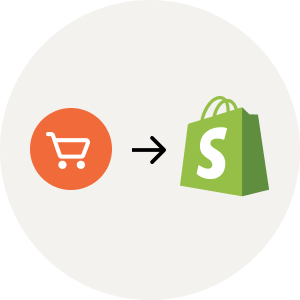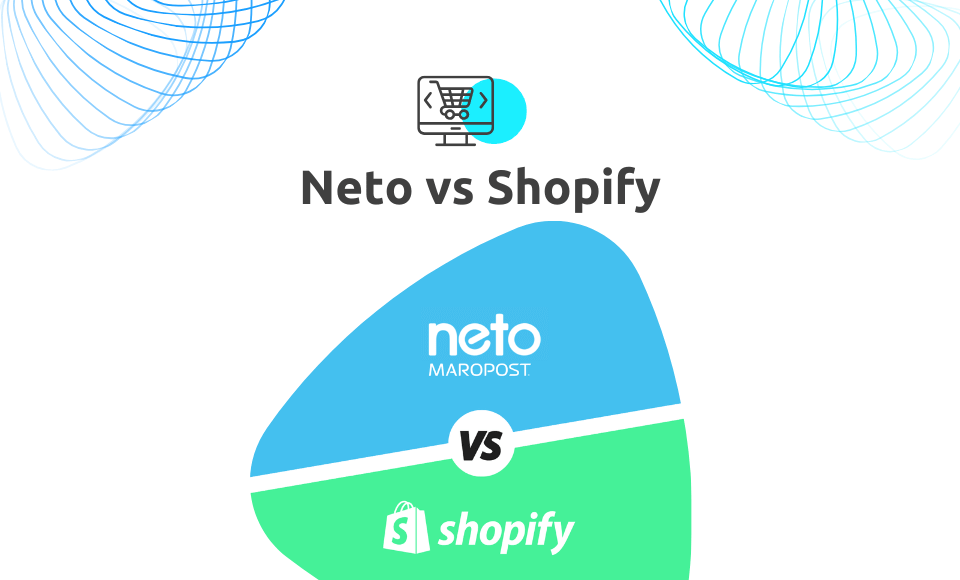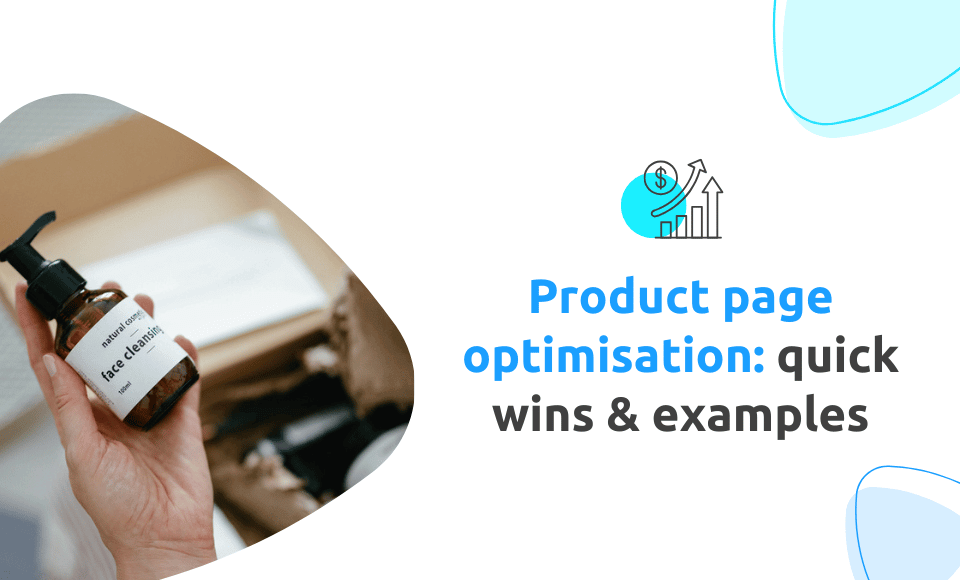If you're an Australian retailer deciding between Neto vs Shopify, you're likely asking the same question many brands face today: which platform will support your next stage of growth?.
Neto has long been trusted by Australian businesses for its built-in marketplace integrations, local support team, and no transaction fees. It’s an all-in-one platform that’s served many brands well, especially in earlier stages.
But things change. Your business might be outgrowing Neto’s capabilities. You may now need better integrations, lower total costs, or a more scalable system.
At the same time, Shopify has evolved from a basic ecommerce tool into a global, flexible platform that supports everything from startup stores to high-volume, omnichannel retailers.
I work with both platforms, so this isn’t about choosing sides. It’s about giving you a practical, honest Neto vs Shopify comparison based on real-world needs and outcomes for Australian brands. In this guide, I’ll walk you through how each platform performs at different stages of your ecommerce journey: from setup to growth, scaling, and total cost of ownership.
Key takeaways
- Neto is built for marketplace-focused retailers but has slowed in innovation and support.
- Shopify offers faster setup, broader integrations, and a much larger app and developer ecosystem.
- Shopify now dominates in Australia with 74× more stores than Neto.
- Businesses outgrowing Neto often switch due to rising fees, limited updates, or the need for flexibility.
- Use this guide to compare both platforms across launch, growth, and scaling phases.
Phase 1 – Launching your ecommerce store
Launching an ecommerce store is often the first major milestone for any retailer. At this early stage, your platform needs to offer an easy setup, intuitive tools, and enough flexibility to support your vision without overwhelming you. When comparing Neto vs Shopify for new brands, the differences become clear.
This phase focuses on design, setup, shipping, payments, and the day-to-day essentials needed to confidently go live.

Theme and design
Your website design is often a customer’s first impression. A clean, professional layout can help establish trust from day one.
- Shopify offers a large selection of premium and free themes with a drag-and-drop editor. It’s ideal for non-technical users who want to launch quickly.
- Neto has fewer theme options and requires more developer involvement, which can slow down early setup.
Verdict: Shopify is easier and faster to launch for non-technical users.
Product setup
Product management affects how efficiently you can add, update, and categorize your catalog.
- Shopify includes bulk editing, CSV import/export, and intuitive tagging, useful for stores with large or changing inventories.
- Neto lacks native bulk editing but supports powerful import/export tools that are effective for experienced operators.
Verdict: Shopify provides a smoother setup experience for most merchants.
Store functionality
Functionality defines how adaptable your store will be as customer expectations grow.
- Shopify offers a clean backend and thousands of apps to extend features like bundles, reviews, and promotions.
- Neto includes many retail-focused features built in, such as Part Finder (for auto parts), Wishlist, and Back in Stock alerts, reducing the need for third-party tools.
Verdict: Shopify is highly customisable via apps, while Neto has more built-in retail tools.
Shipping setup
Shipping rules and carrier options are crucial in early launch, especially for Australian retailers.
- Neto offers advanced local shipping options tailored to Australia Post, StarTrack, and CouriersPlease, ideal for complex logistics.
- Shopify handles simple and international shipping well, but advanced shipping often requires third-party apps or integrations.
Verdict: Neto is better for complex Australian shipping, while Shopify is more flexible for global and simpler setups.
Payments and checkout
Payment setup impacts your conversion rates and operational costs.
- Shopify integrates with 100+ payment gateways. Shopify Payments removes extra transaction fees and simplifies onboarding.
- Neto supports fewer payment gateways and charges transaction fees on enterprise plans.
Verdict: Shopify offers more payment options and faster setup.
Order editing
Editing customer orders before they ship can save time and reduce support costs.
- Neto has native support for order editing with no add-ons required.
- Shopify requires an app for editing orders post-purchase.
Verdict: Neto wins for built-in order editing.
Which platform is better when you're starting?
For most new ecommerce businesses, Shopify delivers a quicker and more scalable launch experience thanks to its user-friendly store editor, reliable infrastructure, and app ecosystem. It minimizes technical barriers and allows stores to get online fast.
Neto is a strong choice for retailers with specific local logistics needs or those who value built-in retail tools, but it often requires more setup time and technical skill.

Phase 2 – Maintaining your store
Once your ecommerce store is live, daily operations become your top priority. Platform choice now affects reliability, support access, and how easily you can keep everything running without downtime or technical stress. Whether you're using Shopify or Neto, maintenance plays a major role in long-term success.
Here’s how each platform supports you during this ongoing phase of running an online store.

Support
Responsive support is essential when things go wrong, especially during peak business hours.
- Shopify offers 24/7 live chat, email support, and an active community forum. Step-by-step help docs make troubleshooting fast and accessible.
- Neto provides support through a ticket-based system during Australian business hours. Some users report longer response times during busy periods.
Verdict: Shopify provides faster, always-on support.
Hosting and security
Hosting and platform-level security are critical to keeping your store online and customer data safe.
- Shopify handles hosting, security, and PCI compliance with automatic updates and no server management needed.
- Neto is also hosted, but merchants may need to perform more manual tasks, such as monitoring updates or backups.
Verdict: Shopify offers lower maintenance and better automation.
Performance and uptime
Store performance directly impacts customer experience, especially during high-traffic periods.
- Shopify is built on a global infrastructure optimized for speed and reliability. It handles high-volume traffic events like Black Friday with ease.
- Neto is stable for mid-sized retailers but not optimized for enterprise-level peak traffic or international reach.
Verdict: Shopify is more reliable for scaling performance.
App and theme updates
Keeping your store updated without breaking features is vital to long-term maintenance and security.
- Shopify manages most app updates automatically. Theme updates are also straightforward and can be done without code using the visual editor.
- Neto often requires developer involvement for app or theme updates, which can increase reliance on technical support.
Verdict: Shopify reduces the need for technical intervention.
Which platform makes store maintenance easier?
For merchants who want a hands-off maintenance experience, Shopify is a clear leader. Automatic platform updates, simple integrations, and 24/7 support make it ideal for business owners who prefer to focus on growth rather than technical management.
Neto can work well for retailers with in-house developers or technical support, but its maintenance requirements are more demanding compared to Shopify.

Phase 3 – Growing your online business
Once your online store is established, growth becomes your main priority. This phase requires tools that support smarter marketing, greater customer engagement, and more advanced operations. Whether you choose Neto or Shopify, your platform needs to adapt as your audience and product range expand.
Here’s how both platforms stack up when you’re ready to scale your sales and operations.

Marketing tools
Marketing capabilities help you reach new customers and retain existing ones with ease.
- Shopify: Includes powerful SEO features, email capture, discount codes, automation-ready analytics, and seamless integrations with tools for upsells, reviews, and loyalty. Shopify Analytics is often enough for merchants without needing Google Analytics.
- Neto: Offers foundational features like coupons, newsletters, and product reviews but lacks the wider automation and app ecosystem that Shopify provides.
Verdict: Shopify is better equipped for scalable marketing.
CRM and segmentation
Customer segmentation allows you to personalise communication and track customer behaviour.
- Shopify: Integrates natively with leading CRM tools like Klaviyo and ActiveCampaign, making segmentation and lifecycle marketing seamless.
- Neto: Includes basic customer records but provides limited segmentation without third-party tools.
Verdict: Shopify offers more flexibility for customer-based marketing.
ERP and inventory
Your platform’s ability to manage stock, suppliers, and ordering workflows is essential for operational success as you grow.
- Neto: Strong built-in ERP toolkit with inventory, supplier orders, and purchase management included natively.
- Shopify: Supports complex inventory workflows through apps like DEAR, Cin7, or advanced Shopify inventory features.
Verdict: Tie, Neto wins for built-in ERP, Shopify wins for integration flexibility.
Marketplace selling
Expanding into marketplaces can dramatically increase your sales channels and brand reach.
- Neto: Offers native multichannel sync with top Australian marketplaces like eBay, Amazon AU, MyDeal, Kogan, and TradeSquare.
- Shopify: Requires third-party apps for marketplace integration. Marketplace Connect (formerly Codisto) supports eBay, Amazon, Etsy, Walmart, and Target, but setups often focus on the US.
Verdict: Neto excels at local marketplace integration.
Which platform gives you more room to grow?
When it comes to growth, Neto and Shopify both offer valuable tools but their strengths differ. Neto’s built-in inventory and marketplace features suit operation-focused businesses that need strong logistics and multichannel selling in Australia.
Shopify leads when marketing flexibility, automation, and integrations are your main growth levers. It gives you more access to CRM, email, and content tools to help scale faster.
Verdict: It’s a tie, choose based on whether your focus is operational strength or marketing power.

Phase 4 – Scaling up your brand
Once your online business achieves steady growth, you may want to expand into new markets, add B2B capabilities, or streamline operations across different channels. At this stage, your platform must support higher volumes and more complex business models without holding you back. This phase highlights how Neto and Shopify perform when scalability, flexibility, and global expansion are your priorities.(source: Power Retail)
Here’s how each platform handles advanced needs like POS, B2B, international selling, and integration depth.

Point of Sale (POS)
POS (Point of Sale) systems are essential for omnichannel retailers who sell both online and in physical stores.
- Shopify offers a modern, fully integrated POS system that syncs with your online store in real time, helping you manage inventory and customer data across channels.
- Neto previously offered its own POS, but it is now outdated. While Maropost (Neto’s parent company) acquired Retail Express to enhance its retail capabilities, there’s currently no native integration between Neto and Retail Express.
Verdict: Shopify is the stronger option for omnichannel retail.
B2B capabilities
Wholesale business models often require special pricing, invoicing, and customer account handling.
- Neto includes built-in B2B features such as customer groups, tiered pricing, and invoicing across all plans. It's especially helpful for local wholesale operations.
- Shopify supports B2B through apps or natively on Shopify Plus, offering more flexibility for global wholesale setups and advanced B2B workflows.
Verdict: Neto offers native B2B value across all plans, but Shopify is better suited for enterprise-level and international B2B.
International selling
Growing brands often need to sell in different markets and currencies.
- Shopify supports multi-currency, regional domains, and international tax handling. It’s designed with global expansion in mind.
- Neto is primarily built for Australian retailers and lacks strong support for selling internationally.
Verdict: Shopify is the better choice for global ecommerce growth.
Performance at scale
Handling increasing product, traffic, and operational demands without performance issues is key to growth.
- Shopify handles enterprise-level operations, large traffic surges, and deep product catalogues effortlessly.
- Neto is stable but more suitable for mid-size operations with local focus.
Verdict: Shopify is more scalable at enterprise level.
API and developer ecosystem
Developer tools and third-party integrations help automate processes and extend your platform’s capabilities.
- Shopify offers extensive APIs, strong documentation, and access to a global network of development partners and experts.
- Neto has a smaller developer ecosystem with fewer advanced integration options.
Verdict: Shopify offers greater development flexibility and choice.
Which platform helps you scale with ease?
If your priority is B2B selling in Australia, Neto delivers built-in features like customer groups, tiered pricing, and invoicing across all plans. It’s well-suited for merchants focused on local wholesale.
Shopify, however, is built to support brands ready for global expansion. It provides a modern, integrated POS system, international storefronts, advanced B2B capabilities on Shopify Plus, and a deep developer ecosystem, making it easier to scale, diversify, and evolve without technical limitations.
Verdict: Shopify is the best platform for brands ready to scale both locally and internationally with confidence.

Understand pricing and ownership costs
Choosing the right ecommerce platform isn’t just about features, the true cost of ownership also includes transaction fees, app subscriptions, and any technical help you may need. Understanding how Shopify and Neto differ in pricing and long-term operating costs will help you set realistic budgets as your business grows.
This comparison will help you understand the real costs of running your store on Neto vs Shopify, beyond just the monthly fees.
Platform pricing
Your platform subscription is the starting point for ongoing costs.
- Shopify starts from AUD $42/month, offering scalable pricing with more features at higher tiers.
- Neto starts from AUD $199/month, which includes several built-in features but offers less flexibility overall.
Verdict: Shopify offers a lower entry point and more scalable pricing.
Transaction fees
Transaction fees can affect your margins, especially if you're using third-party payment gateways.
- Shopify: No extra transaction fees when using Shopify Payments. Third-party gateways incur small fees depending on your plan.
- Neto: Charges transaction fees on enterprise plans, which can add to costs at scale.
Verdict: Shopify is more predictable and transparent for high-volume merchants.
Integration and app costs
Both platforms handle core features differently and this affects how much you spend on add-ons.
- Shopify: Offers a large selection of paid apps, many of which deliver powerful functionality with seamless setup and ongoing updates.
- Neto: Includes more built-in tools out of the box but may require developer involvement for advanced customisation.
Verdict: Tie: depends on your business needs and technical preferences.
Developer and support costs
Technical support and developer assistance can significantly impact your long-term operating budget.
- Shopify: Designed to be managed without a developer thanks to its visual editor, clear admin interface, and large support ecosystem.
- Neto: Often requires technical skills or developer support for even smaller changes, depending on your setup.
Verdict: Shopify is more DIY-friendly and cost-effective for non-technical users.
Tapping into ecosystem: tools, community, and innovation
The strength of a platform’s ecosystem can significantly impact your growth potential. Beyond core features and pricing, factors like global reach, developer support, and access to new tools shape how fast and far your ecommerce brand can scale. Comparing Neto vs Shopify from an ecosystem perspective reveals major differences in support, innovation, and available resources (source: McKinsey).
Global reach
Global presence can open doors to new markets and increase customer trust.
- Shopify powers over 5 million stores in 175 countries, with strong adoption across all major ecommerce markets.
- Neto focuses primarily on Australian merchants with a limited international footprint.
Verdict: Shopify leads in global reach and brand recognition.
Shopify’s dominance is clear even in Australia, where it powers over 163,000 stores compared to just 2,210 on Neto.
Number of live stores by country (Shopify vs Neto)
| Country | Shopify Stores | Neto Stores |
|---|---|---|
| United States | 3,132,219 | 62 |
| United Kingdom | 233,102 | 10 |
| Australia | 163,691 | 2,210 |
| New Zealand | 30,521 | 53 |
Source: BuiltWith (26/07/2025)
App ecosystem
Apps extend your store’s capabilities without custom development.
- Shopify offers over 8,000 apps ranging from loyalty programs and product bundles to subscriptions and marketing automation.
- Neto has a smaller app marketplace and may require custom builds to match the same functionality.
Verdict: Shopify provides a larger ecosystem of plug-and-play tools.
Developer community
Access to expert help can make customisation and troubleshooting significantly easier.
- Shopify has an extensive global network of developers, agencies, and partners ready to support brands at any stage.
- Neto has a smaller partner ecosystem, which can make it challenging to find developers or support for advanced customisation.
Verdict: Shopify offers broader and more accessible support options.
Innovation and updates
Regular updates ensure your platform stays competitive and future-ready.
- Shopify rolls out frequent updates, introducing performance improvements, new features, and AI enhancements.
- Neto updates less often, meaning new features may be slower to arrive.
Verdict: Shopify moves faster with continual improvements and innovation.
Quick Comparison: Neto vs Shopify
- Best for fast setup and scalability: Shopify
- Best for Australian marketplace-focused retailers: Neto
- Best long-term value and flexibility for growing brands: Shopify
- Previously known for local support and fixed fees, now less competitive: Neto
Conclusion: Which platform is right for you?
If your store is running smoothly on Neto, and your operations are primarily local especially with B2B or marketplace selling, Neto can still serve your business well. It offers strong built-in functionality, handles complex Australian shipping, and supports many established retailers in Australia.
However, if your business is growing, or you want more flexibility, easier maintenance, and long-term scalability, Shopify is likely the better fit. It offers a more intuitive experience, faster support, and a global ecosystem that helps your brand expand without technical roadblocks.
Throughout this comparison, we’ve evaluated Neto vs Shopify across key stages of ecommerce: launching a store, daily management, growth, and large-scale expansion. Both platforms have their strengths, but Shopify consistently delivers the versatility and momentum needed to support growth-focused brands.
Whether you’re planning to refresh your current Neto site, or exploring a full migration to Shopify, you don’t have to figure it out alone.
Whichever platform you choose, I’m here to help you make the right decision, so you can grow your business with clarity and confidence.
Neto vs Shopify FAQ
Is it worth switching from Neto to Shopify?
No, not if Neto meets your current needs. Shopify is worth switching to if you want easier maintenance, more integrations, or plan to scale internationally.
Does Shopify support Australian shipping carriers like Neto?
Yes. Shopify supports major carriers like Australia Post and Sendle, but advanced shipping rules often require third-party apps.
Which platform is better for B2B: Neto or Shopify?
Neto offers built-in B2B tools on all plans. Shopify offers more advanced B2B functionality via apps or Shopify Plus for enterprise brands.
Can I keep selling on eBay and Amazon if I move from Neto to Shopify?
Yes. You can continue selling on marketplaces using apps like Marketplace Connect, but you’ll need to reconfigure your integrations during migration.
Is Shopify better for marketing than Neto?
Yes. Shopify offers stronger marketing tools and integrations for email, SEO, and automation, supported by its larger app ecosystem.
Which platform scales better for growing brands?
Shopify scales better due to its global hosting infrastructure, extensive APIs, and support for large product catalogs and traffic surges.
What if I just want to redesign my current Neto site instead of switching?
You can redesign your Neto site without migrating. A refresh can improve user experience if the platform still meets your business needs. See Neto redesign services.
How do I get started if I decide to move my Neto store to Shopify?
Begin by exporting your products, customers, and order data from Neto, then import and map the data to Shopify using tools or apps. Review your themes, apps, and shipping setup before going live. If you want expert help, our Shopify migration service can handle the process end-to-end and minimise disruption.








Leave a comment
This site is protected by hCaptcha and the hCaptcha Privacy Policy and Terms of Service apply.